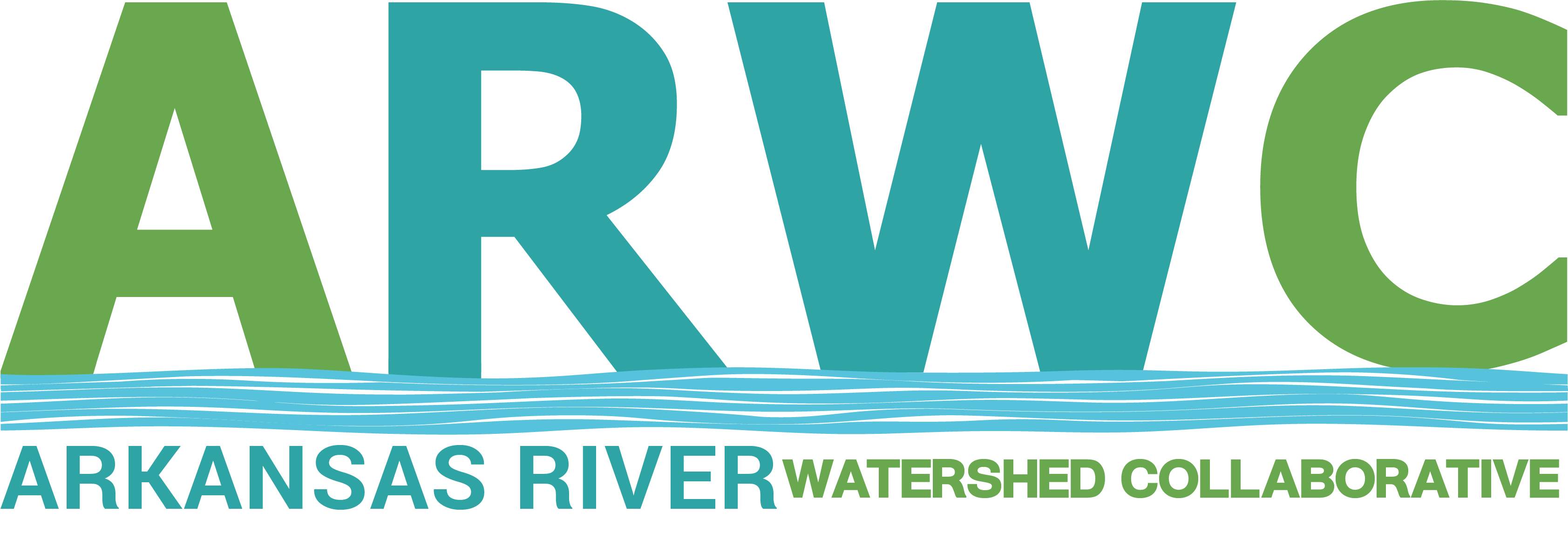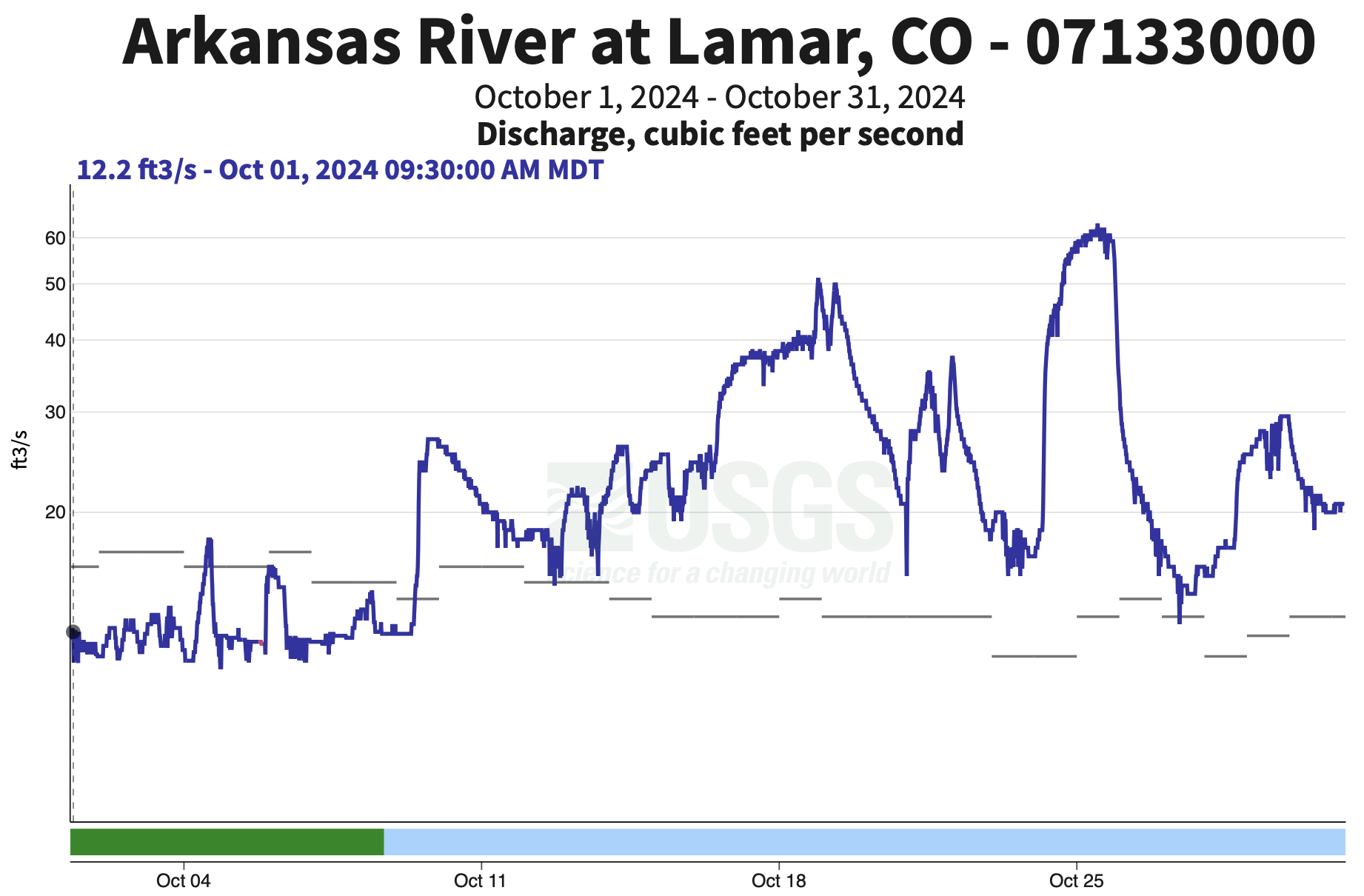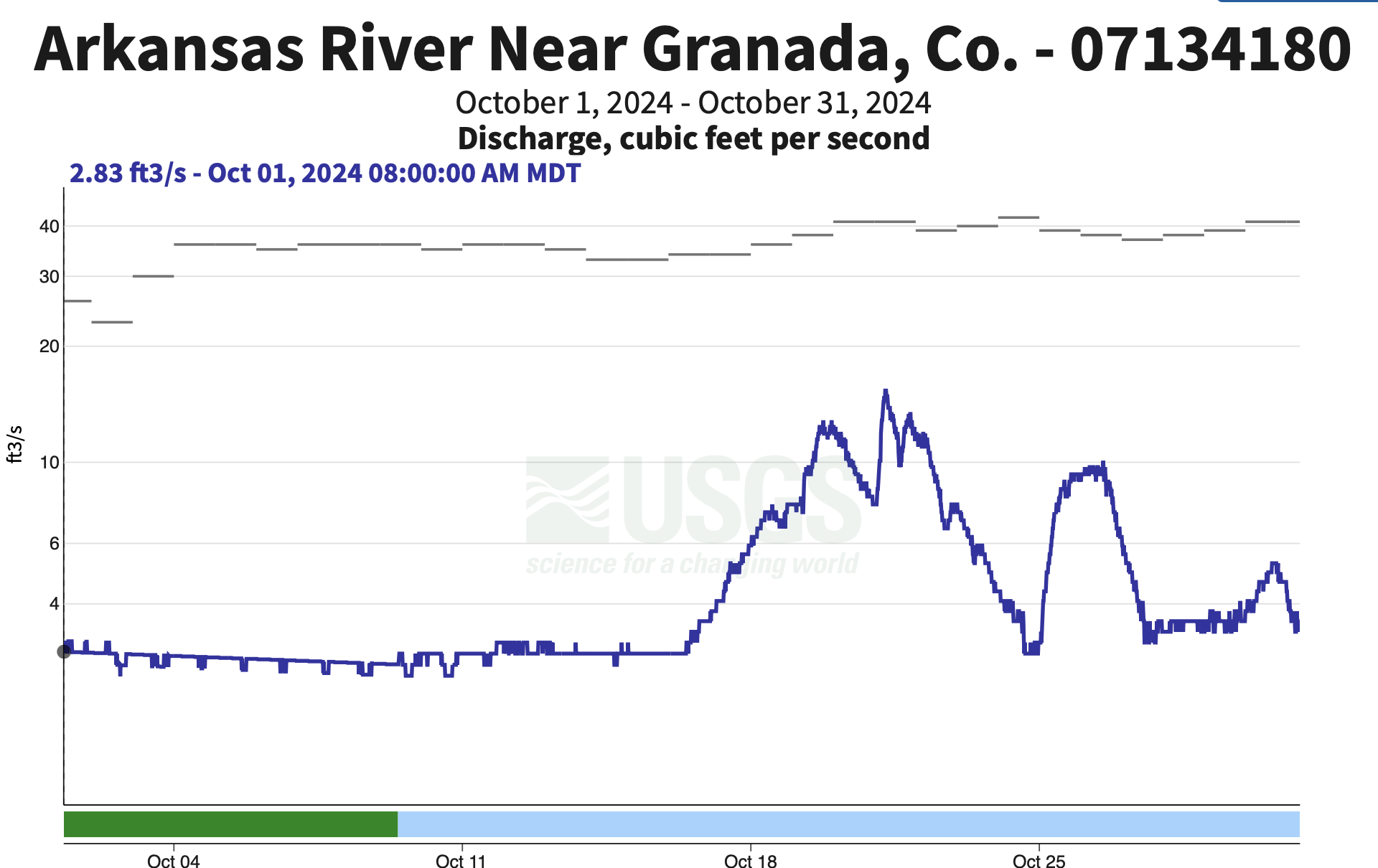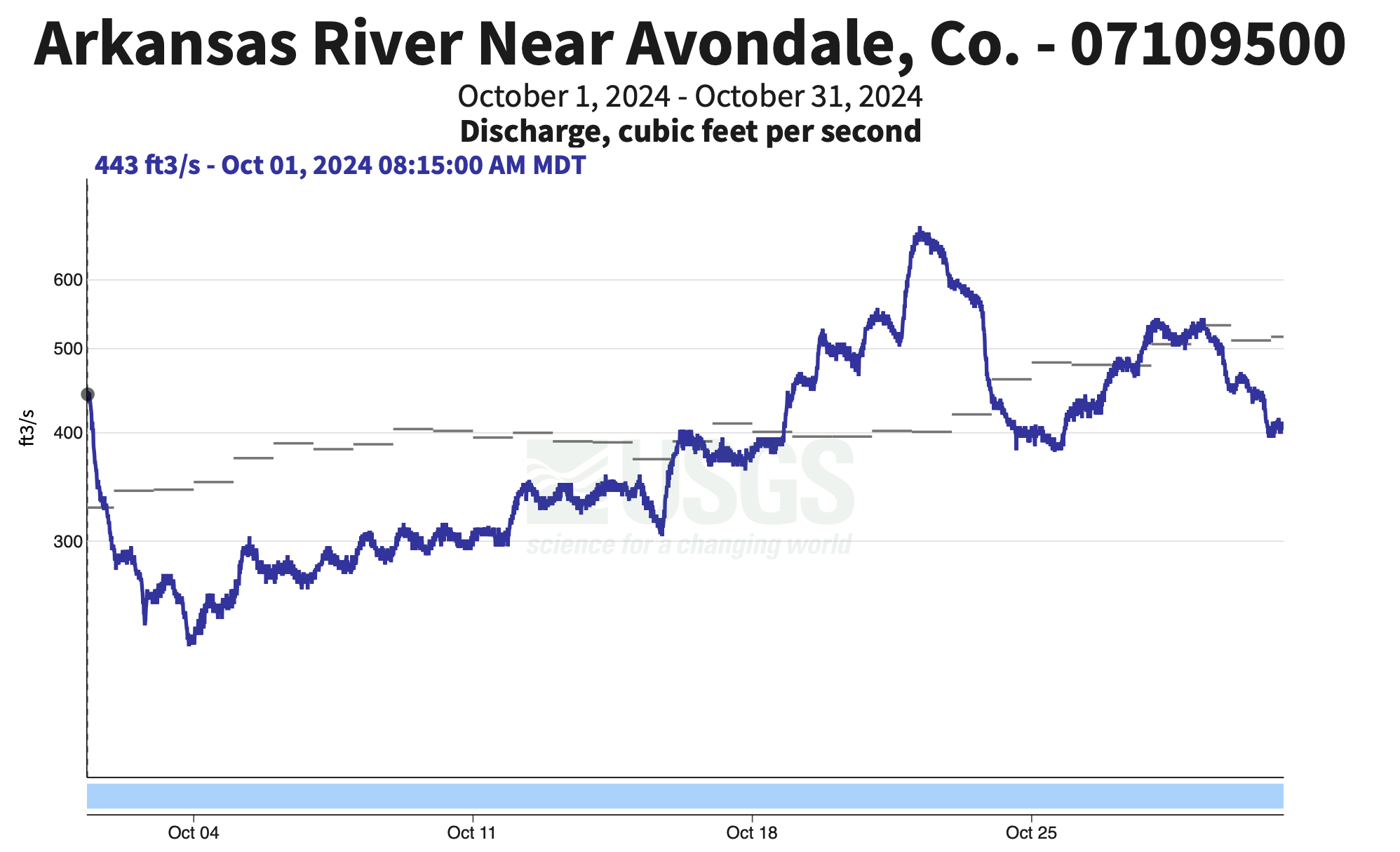Arkansas River Report for October 2024
Drought and Precipitation
October brought with it Colorado’s first significant snowfall of the season, leaving the Arkansas River Basin’s snow totals at 94% of the median (figure 1; figure 2). Some areas of the basin have yet to see their first snow. Average first snowfall dates vary greatly across the Arkansas River Basin, but the timing of these first snow events generally follows recent trends in temperature in Colorado, where the falls have gotten a lot warmer, but the springs haven’t warmed nearly as much, reported the Colorado Climate Center (figure 3; figure 4).
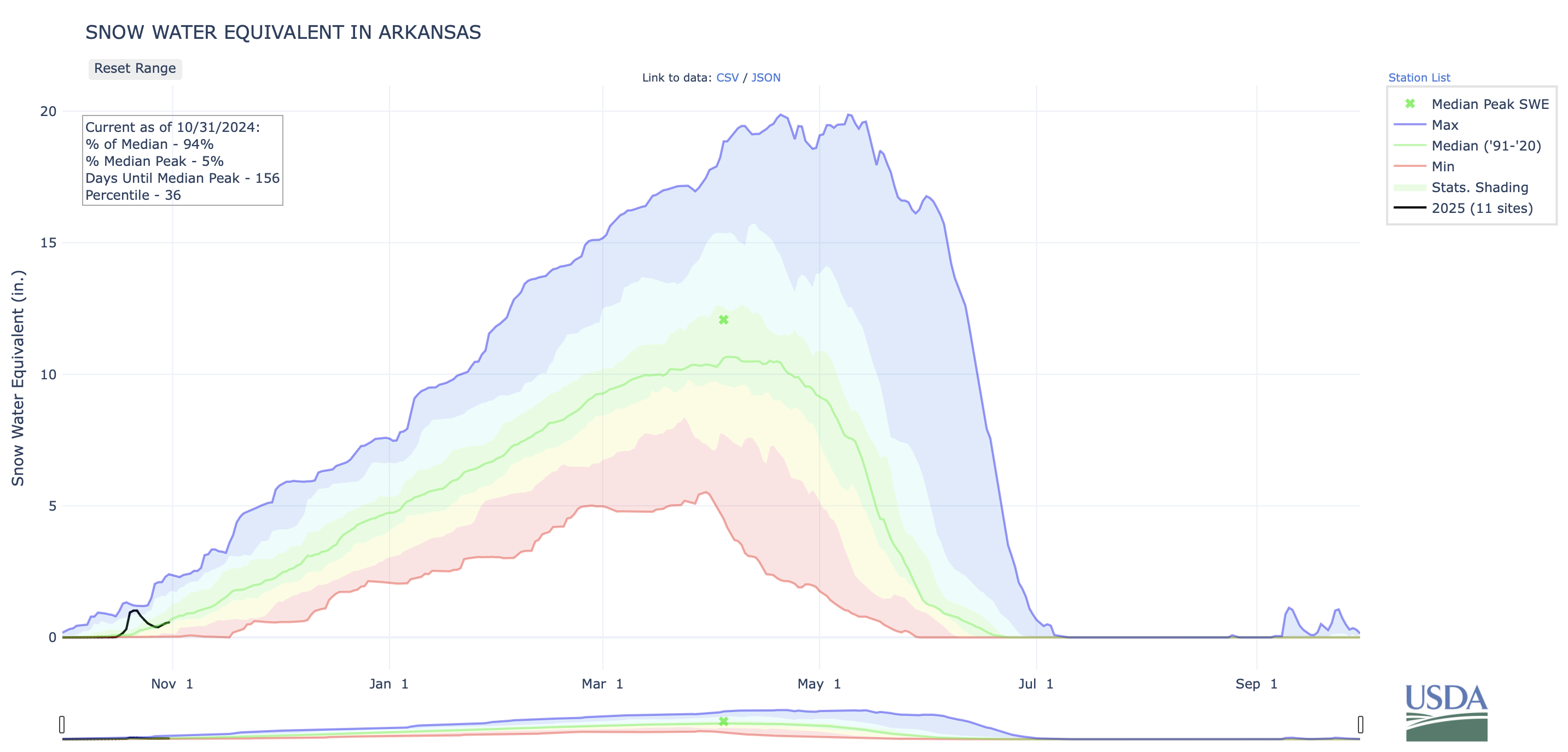
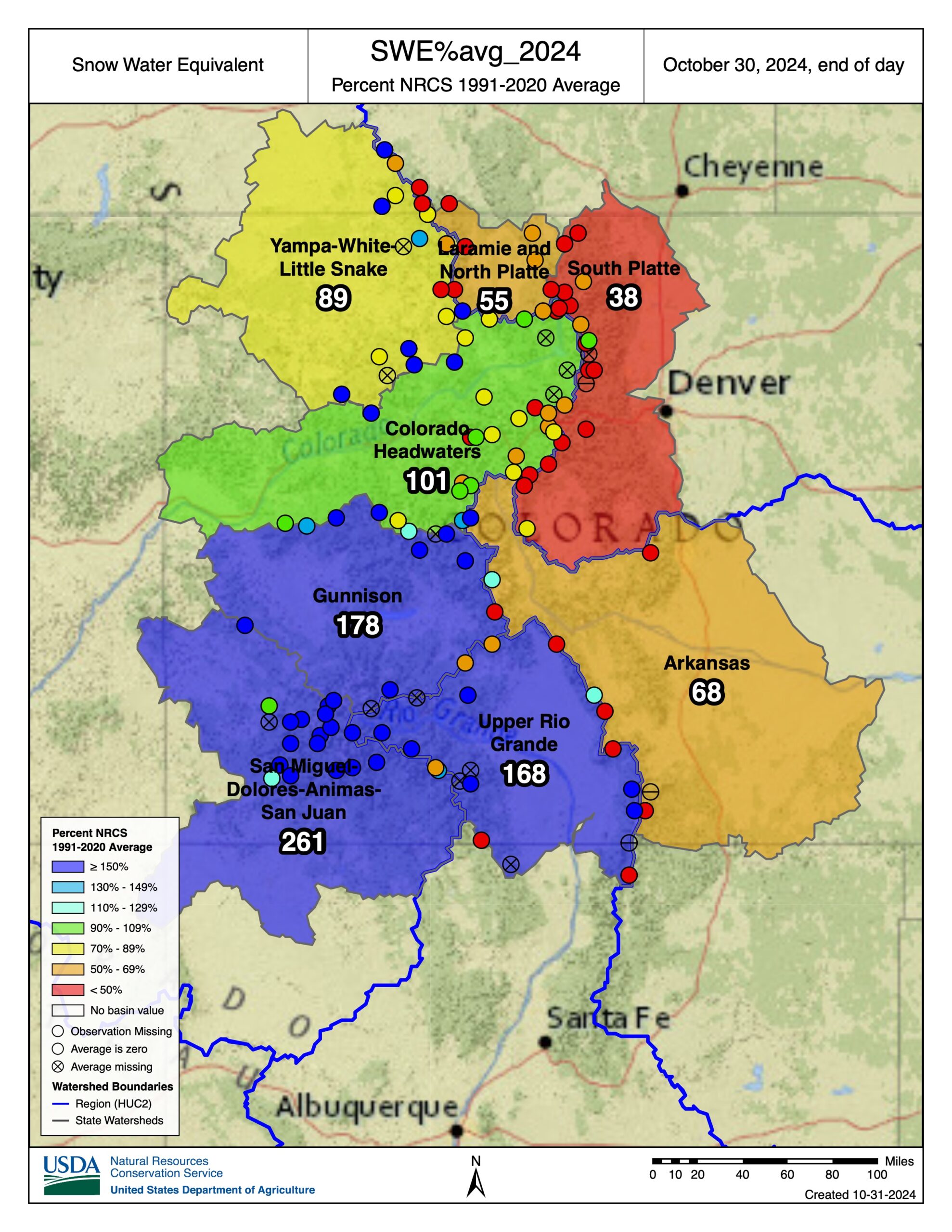
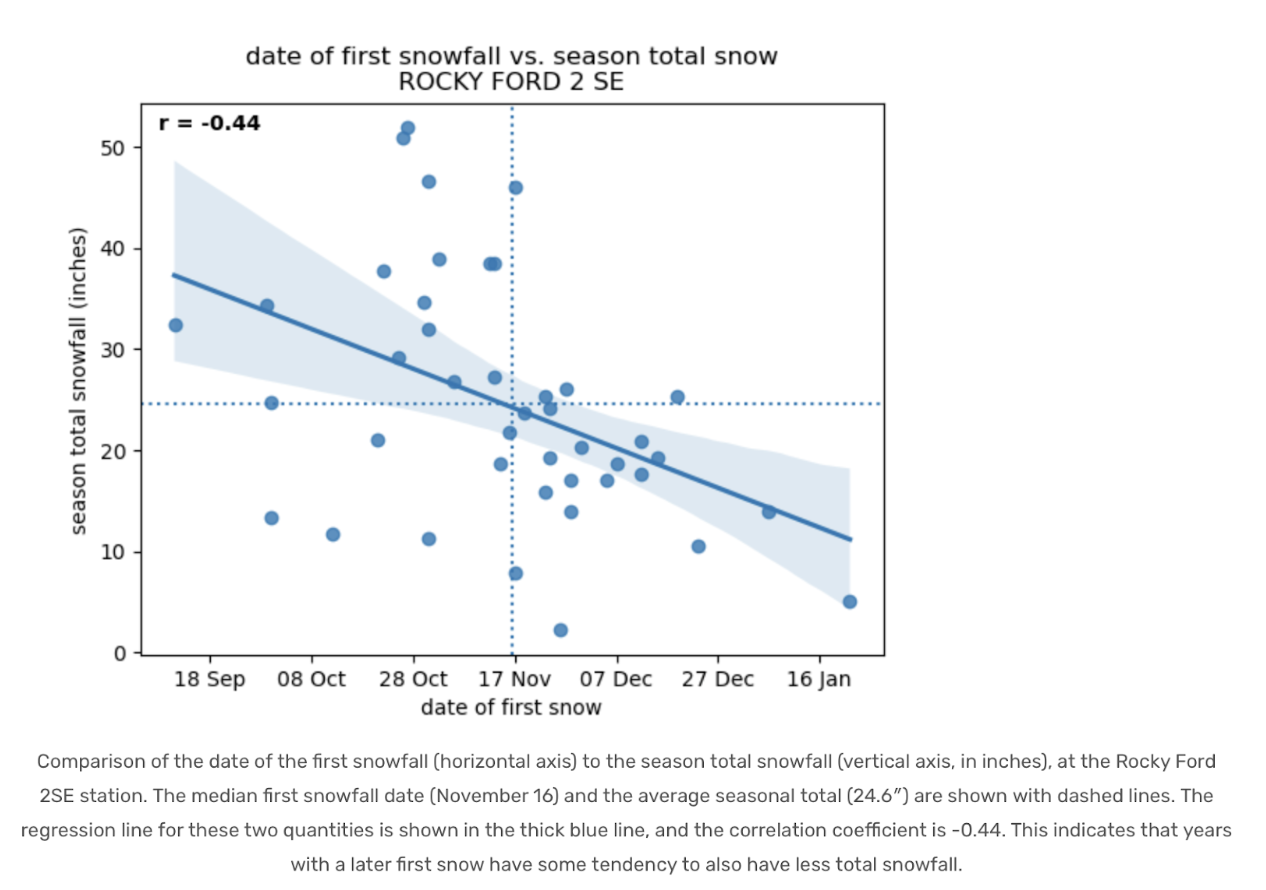
figure 4: “First snow in Colorado”- Colorado Climate Blog (source)
According to the most recent U.S, Drought Monitor, most of the Arkansas River Basin is abnormally dry or drought free, with moderate or severe drought only along the Kansas-Colorado (figure 5). In general, recent drought reports indicate that western Colorado has seen less severe drought conditions, and eastern Colorado has seen more server drought.

figure 5: US Drought Monitor (10/31/2024)
The National Weather Service’s Three Month Outlook is predicting that there will likely be above-normal temperatures and leaning towards a warmer/drier conditions in the Arkansas River basin through January (figure 6; figure 7). These models are based on a predicted shift to La Niña. As of now, the National Weather Service Climate Prediction Center reports that La Niña is favored to emerge in September-November (60% chance) and is expected to persist through January-March 2025. During La Niña cycles, Colorado typically sees dry falls and snowy winters.
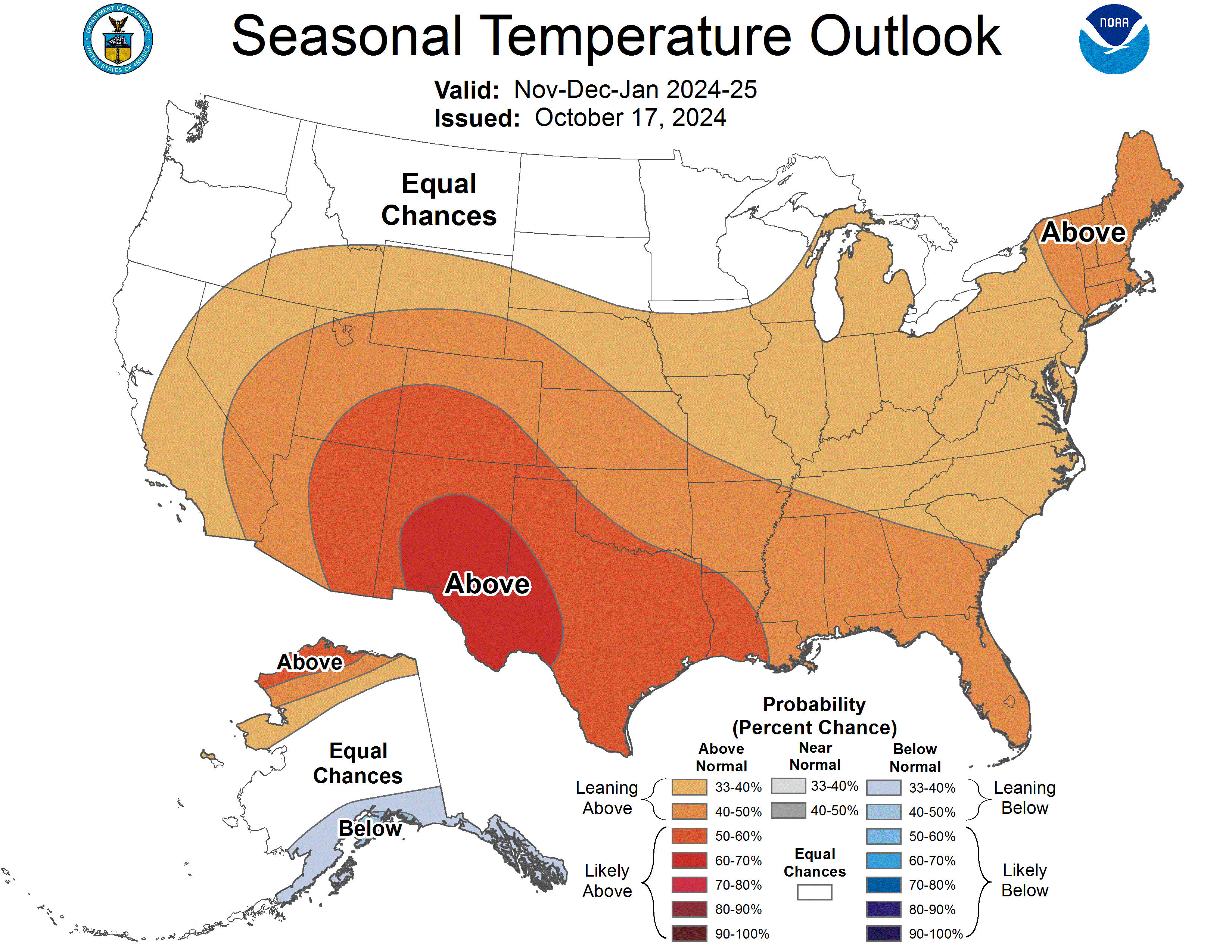
figure 6: Three Month Temperature Outlook

figure 7: Three Month Precipitation Outlook
Monthly Precipitation Totals

River Flows
Flows Compared to Median
*30 year running avg
River Flow Snapshot (10/31/2024,12:00pm)*
* measured flow totals include native flows, BOR project water, releases, and exchanges
- Granite, CO (8 miles south of Leadville)- 98.8 cfs
- Salida, CO- 372 cfs
- Wellsville, CO- 421 cfs
- Portland, CO (10 miles south of Canon City)- 422 cfs
- Above Pueblo Reservoir, CO- 422 cfs
- Avondale, CO- 443 cfs
- Lamar, CO- 22.1 cfs
For current streamflow updates, reference the Colors of Water webpage.
Reservoir Storage
|
figure 5: Pueblo Reservoir October elevation
|
figure 6: Pueblo Reservoir Storage Allocations
|
|
figure 7: Twin Lakes Reservoir October Elevation
|
figure 8: Twin Lakes Reservoir Allocations
|
|
figure 9: Turquoise Lake October elevation
|
figure 10: Turquoise Lake Storage Allocations
|
Reservoir Storage Snapshot (10/31/2024, 12:00pm)
- Pueblo Reservoir-
- Pool Elevation: 4866.73 Feet
- Reservoir Storage: 193917 Acre-Feet
- 60 % Full*
- Reservoir Flood Control Pool: filled 0.0 %
- Turquoise Lake-
- Pool Elevation: 9859.25 Feet
- Reservoir Storage: 111634 Acre-Feet
- 90 % Full*
- Reservoir Flood Control Pool: filled 0.0 %
- Twin Lakes Reservoir-
- Pool Elevation is 9193.5 Feet
- Reservoir Storage is 123599. Acre-Feet
- Reservoir is 87.7 % Full*
- Reservoir Flood Control Pool: filled 0.0 %
Calling Water Rights
Active Administrative Calls Snapshot (9/3/2024, 12:00pm)
The current calling rights are:
1862, Canon Heights Ditch, Fourmile Creek.
1865, Hoehne Ditch, Purgatoire River.
1866, Walsenburg Ditch, Cucharas River.
1866, Gonzales Ditch, Apishapa River.
1867, Garcia Ditch No.2, Huérfano River.
1868, Hayden Supply Ditch, Greenhorn Creek.
1869, Reece Ditch, Hardscrabble Creek.
1873, Stout Ditch No. 1, Stout Creek.
1873, Whitman and Mott Ditch, Apache Creek.
1881, Dotson Ditch No. 1, Saint Charles River.
1883,Cameron Ditch, North Fork South Arkansas River.
1882, Tennessee Ditch, South Arkansas River.
1887, Amity Canal, Arkansas River mainstem.
1949, Arkansas River Compact, Arkansas River mainstem.
The authorized diversions are:
1887, Oxford Canal, Arkansas River mainstem.
1889, Welton Ditch, Huerfano River.
1889, X-Y Irrigating Ditch, Arkansas River mainstem.
1891, Sunnyside Park Ditch, Arkansas River mainstem.
1904, Dell Ditch No. 1, Currant Creek.
1907, Joseph Dunn Ditch, Lake Fork.
1911, Plum Creek Ditch, Plum Creek.
1912, New Salida Ditch, Arkansas River mainstem.
1912, Rock Creek Ditch, Rock Creek.
1912, Lake Creek Ditch, Lake Fork.
1948, Allstrum Ditch, Thirtyone Mile Creek.
The Futile Call is:
1948, Almstrum Ditch, Thirtyone Mile Creek.
Want to Learn More? Check out these resources below!
Monitoring
Drought Monitoring: US Drought Monitor
Drought Forecast: National Weather Service Climate Prediction Center
Precipitation Totals: Community Collaborative Ran, Snow, and Hail Network’s Precipitation Mapping System.
Snowpack: Natural Resources Conservation Service
Winter Water Storage System (only applicable until march): Southeastern Colorado Water Conservancy District
Precipitation: https://www.cocorahs.org/
Arkansas River Daily Report – http://www.div2waterops.com/dailyreports
Wind: Windy
Snow Survey and Water Supply Forecasting: Natural Resource Conservation Service Snow Survey
Additional monitoring resources:
Colorado Water Conservation District/Department of Natural Resources
Definitions
30 Year Running Average: When we present the monthly flows, we compare them to that month’s median flows from the last 30 years (referred to as 30 year running average).
Reservoir Percent Full: The Bureau of Reclamation considers a reservoir “full” when pool elevation is at the top of the active conservation pool. Percentage is therefore based on total reservoir volume below that level.
Authorized Diversion: An authorized diversion is NOT A CALL, but a notice that one (or more) diversion structures are subject to a call have been authorized to divert water against the call. These types of diversions are only authorized when the diversion will not affect the downstream call. This type of diversion could occur due to a localized event, such as precipitation diurnal patterns (labeled futile diversion or localized event)
Nonconsumptive call: A call by a diversion that consumes no water (ex. Hydropower, in-stream flow water management).
Futile Call: A situation in which a junior water right holder is allowed to continue to divert in spite of a downstream senior call when curtailing the junior would not produce any additional water for the senior.
For more information on calls, reference the Colorado Division of Natural Resources Administrative Call Standard document.
Educational Resources
Administrative Call Explained: DWR
Citizen’s Guide to Colorado Water Law: CFWE Education
Non-Attorney’s Guidebook to Colorado Water Courts: Co State
Voluntary Flow Management
- https://arkvalleyvoice.com/ahra-says-arkansas-river-flows-are-high-and-fast-making-safety-paramount/
- https://coloradotu.org/arkansas-river
U.S. Climate Normals: https://www.ncei.noaa.gov/products/land-based-station/us-climate-normals
figure 4: Three month temperature outlook
figure 5: Three month precipitation outlook
